Inspection Engineer
100+ Inspection Engineer Interview Questions and Answers
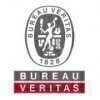
Asked in Bureau Veritas

Q. Which instrument is used for surface preparation?
The instrument used for surface preparation is a sandblaster.
Sandblaster is commonly used for surface preparation in industries like construction, automotive, and shipbuilding.
It uses compressed air to propel abrasive material at high velocity to smooth out rough surfaces or remove contaminants.
Examples of abrasive materials used in sandblasters include sand, garnet, and glass beads.
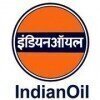
Asked in Indian Oil Corporation

Q. What are you looking for during a visual weld inspection?
In weld visual inspection, we will see the quality of the weld and any defects present.
Quality of the weld
Presence of any defects
Cracks, porosity, lack of fusion, undercutting, etc.
Weld reinforcement and penetration
Alignment and dimensions of the weld
Surface finish and cleanliness

Asked in TÜV SÜD

Q. How will you inspect a transformer before commissioning?
Before commissioning a transformer, inspection can be done by following these steps:
Check for any physical damage or signs of overheating on the transformer
Inspect the insulation system for any signs of degradation or contamination
Verify the correct installation of all components and connections
Perform electrical tests to ensure proper functioning and performance
Check the oil level and quality in oil-filled transformers
Inspect the cooling system and ensure proper ventilation
V...read more

Asked in TÜV SÜD

Q. How do you prepare welder qualifications according to ASME standards?
To prepare welder qualification as per ASME, follow ASME Section IX guidelines, conduct welder performance qualification tests, and maintain records.
Follow ASME Section IX guidelines for welder qualification
Conduct welder performance qualification tests such as visual examination, bend test, and radiographic testing
Maintain records of welder qualifications and requalification tests
Ensure welders are trained and certified to perform specific welding procedures
Regularly review ...read more
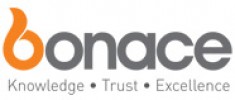
Asked in Bonace Engineers

Q. What is the difference between UTG and UT?
UTG stands for Ultrasonic Thickness Gauging, used for measuring thickness of materials. UT stands for Ultrasonic Testing, used for detecting flaws in materials.
UTG is used for measuring thickness of materials, while UT is used for detecting flaws in materials
UTG is commonly used in industries like construction and manufacturing to ensure material thickness meets specifications
UT is commonly used in industries like aerospace and automotive for detecting cracks, voids, and othe...read more
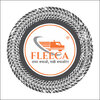
Asked in Fleeca India

Q. There are two type of Tyer. 1)Radial Tyer 2) Nylon Tyer.
Radial and Nylon are two types of tires used in vehicles.
Radial tires have steel belts running perpendicular to the tread while Nylon tires have nylon cords running parallel to the tread.
Radial tires provide better fuel efficiency and handling while Nylon tires offer better durability and resistance to punctures.
Radial tires are more commonly used in passenger cars while Nylon tires are used in heavy-duty vehicles like trucks and buses.
Inspection Engineer Jobs

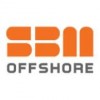


Asked in Jindal Stainless

Q. What are the testing methods for stainless steel?
Various testing methods for stainless steel include visual inspection, dye penetrant testing, magnetic particle testing, ultrasonic testing, radiographic testing, and hardness testing.
Visual inspection is the simplest method to check for surface defects or inconsistencies.
Dye penetrant testing involves applying a colored dye to the surface and then using a developer to detect any cracks or defects.
Magnetic particle testing uses magnetic fields to identify surface and near-sur...read more

Asked in Planedge Consultants

Q. What are PERT & CPM
PERT & CPM are project management techniques used to plan, schedule, and control complex projects.
PERT stands for Program Evaluation and Review Technique, while CPM stands for Critical Path Method.
PERT is used for projects with high uncertainty and risk, while CPM is used for projects with well-defined activities and timelines.
Both techniques involve breaking down a project into smaller tasks, estimating the time and resources required for each task, and creating a network di...read more
Share interview questions and help millions of jobseekers 🌟

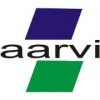
Asked in Aarvi Encon

Q. What is the inspection procedure for a pressure vessel?
Inspection procedure for pressure vessel involves visual inspection, non-destructive testing, and documentation review.
Visual inspection of the exterior and interior surfaces of the pressure vessel
Non-destructive testing methods such as ultrasonic testing, radiography, and magnetic particle testing
Review of documentation including design specifications, fabrication records, and previous inspection reports

Asked in Reliance Industries

Q. Based on your CV, elaborate on your technical knowledge and experience.
As an Inspection Engineer, I leverage technical expertise to ensure compliance and safety in engineering projects.
Conduct thorough inspections of equipment and structures to identify potential issues.
Utilize non-destructive testing methods, such as ultrasonic and radiographic testing, to assess material integrity.
Develop and implement inspection plans based on industry standards and regulations.
Collaborate with project teams to ensure quality assurance throughout the project ...read more

Asked in Indian Oil Corporation

Q. How do you inspect a heat exchanger?
Heat exchangers can be inspected using various methods such as visual inspection, non-destructive testing, and cleaning.
Visual inspection of the heat exchanger tubes and fins for any signs of corrosion, erosion, or damage.
Non-destructive testing methods such as ultrasonic testing, radiography, and eddy current testing can be used to detect any defects or cracks in the heat exchanger.
Cleaning the heat exchanger regularly to prevent fouling and blockages that can reduce its eff...read more

Asked in Intertek

Q. Q. QAP, WPS and DFT description?
QAP, WPS, and DFT are important documents used in inspection engineering.
QAP stands for Quality Assurance Plan, which outlines the procedures and requirements for ensuring quality in a project or process.
WPS stands for Welding Procedure Specification, which provides detailed instructions for performing welding operations.
DFT stands for Dry Film Thickness, which refers to the thickness of a coating or paint applied to a surface.
QAP ensures that quality standards are met throug...read more

Asked in Intertek

Q. What are the different types of valves and their functions?
Valves are devices used to control the flow of fluids or gases in a system.
Gate valve: used to start or stop the flow of fluid by lifting or lowering a gate
Ball valve: uses a rotating ball with a hole to control the flow
Check valve: allows flow in one direction and prevents backflow
Globe valve: controls flow by raising or lowering a disc against the flow
Butterfly valve: uses a disc to control flow by rotating it
Asked in Meenaar Global Consultants

Q. What do you know about the oil and gas sector?
I have knowledge and experience in the oil and gas sector.
I have studied the exploration, production, and refining processes of oil and gas.
I am familiar with the equipment and machinery used in the industry.
I have worked on inspection and maintenance of pipelines, tanks, and other facilities.
I understand the safety regulations and environmental concerns related to the sector.
I have knowledge of the market trends and pricing of oil and gas.
I have experience working with multi...read more

Asked in Intertek

Q. What data is required for fire and safety inspections?
Data required for fire & safety
Building layout and floor plans
Location of fire exits and emergency equipment
Fire suppression systems and equipment
Fire alarm and detection systems
Emergency response plan and procedures

Asked in Indian Oil Corporation

Q. What do you look for when inspecting pipe fit-up?
Pipe fit up should be checked for proper alignment, gap, and cleanliness.
Check for proper alignment of pipes
Ensure there is no gap between the pipes
Inspect for cleanliness of the pipes
Verify that the pipes are properly supported
Check for any defects or damages in the pipes

Asked in TÜV SÜD

Q. What is an embankment, and can you explain it?
An embankment is a raised structure made of soil or other materials used to support a roadway or railway track.
Embankments are commonly used in transportation infrastructure to raise the level of the roadway or railway track above the surrounding terrain.
They are typically made of soil, rock, or other materials that are compacted and shaped to form a stable structure.
Embankments can also be used to control erosion along shorelines or riverbanks.
Proper design and construction ...read more

Asked in Spinny

Q. How can you determine if a car's meter has been tampered with?
To determine if a car's odometer has been tampered with, check for inconsistencies in mileage and service records.
Check Service Records: Compare the odometer reading with the service history; discrepancies may indicate tampering.
Inspect Wear and Tear: Excessive wear on pedals, seats, and steering wheel relative to the odometer reading can suggest tampering.
Look for Odometer Rollback Signs: Signs of physical tampering, such as scratches around the odometer or loose screws, can...read more

Asked in Bureau Veritas

Q. What is an IQI in radiography testing?
IQI stands for Image Quality Indicator, used in radiography testing to ensure the quality of the radiographic image.
IQI is a tool used to determine the quality of radiographic images by measuring the image quality parameters such as contrast, resolution, and sensitivity.
It consists of a series of patterns or objects with specific details that are placed on the radiographic film along with the test object.
The IQI is then exposed to the same conditions as the test object to eva...read more

Asked in Intertek

Q. Do you know how to examine Lab reports?
Yes, I can examine lab reports by analyzing data, identifying trends, and ensuring compliance with standards.
Review the report for accuracy and completeness, checking for any missing data or discrepancies.
Analyze test results against established benchmarks or standards to determine compliance.
Look for trends in the data, such as repeated anomalies or significant changes over time.
Ensure that the methodology used in the tests is appropriate and follows industry standards.
Commu...read more

Asked in Indian Oil Corporation

Q. How do you conduct a visual test?
Visual test involves using the naked eye to inspect a surface or material for defects or irregularities.
Ensure proper lighting and angle for optimal visibility
Look for cracks, corrosion, discoloration, or other abnormalities
Compare with reference standards or previous inspections
Use magnifying glasses or borescopes for closer examination
Document findings and report any issues
Asked in Nansam Ventures

Q. What is the mix ratio for M25 grade concrete?
The ratio of M25 concrete is 1:1:2
The ratio of M25 concrete is 1 part cement, 1 part sand, and 2 parts aggregate
This ratio is commonly used in construction for medium strength concrete
For example, to make 1 cubic meter of M25 concrete, you would need 1/4 cubic meters of cement, 1/4 cubic meters of sand, and 1/2 cubic meters of aggregate

Asked in Bonace Engineers

Q. Tell me about welding.
Welding is a process of joining two or more metal pieces together by melting and fusing them.
Welding involves the use of heat to melt the base metals and a filler material to form a joint.
Common welding techniques include arc welding, MIG welding, TIG welding, and spot welding.
Welding is used in various industries such as construction, automotive, aerospace, and manufacturing.
Proper welding techniques are crucial for ensuring the strength and integrity of the joint.
Welding in...read more

Asked in Reliance Industries

Q. How do you identify a material that is fully rusted?
By visual inspection, measuring thickness, conducting hardness tests, and using non-destructive testing methods.
Visual inspection for signs of rust and corrosion
Measuring thickness using tools like ultrasonic thickness gauges
Conducting hardness tests to check for degradation
Using non-destructive testing methods like radiography or ultrasonic testing
Referencing material specifications and standards for expected corrosion rates

Asked in HERTZ INSPECTION & SERVICES

Q. What is t4s and why are regulatory pngrb.
T4S is a regulatory body governed by PNGRB.
T4S stands for Transmission System Service Provider
It is responsible for regulating the transmission of natural gas in a country
PNGRB stands for Petroleum and Natural Gas Regulatory Board
PNGRB is the governing body that regulates the activities of T4S
T4S ensures fair and efficient transmission of natural gas
It sets tariffs, monitors compliance, and resolves disputes in the transmission sector

Asked in GTN Textiles

Q. How do you measure the pitch value of a drill hole?
The pitch value of a drill hole can be measured using a pitch gauge or by calculating the distance between consecutive threads.
Use a pitch gauge to directly measure the pitch value of the drill hole.
If a pitch gauge is not available, measure the distance between consecutive threads and calculate the pitch value using the formula: pitch = distance / number of threads.
Ensure accurate measurements by using precision tools and techniques.
Example: If the distance between two conse...read more

Asked in Indraprastha Gas

Q. How do you perform work at IGL?
To work in IGL, one must have knowledge of inspection techniques and equipment used in the oil and gas industry.
Understand the inspection requirements and standards set by IGL
Use appropriate inspection techniques and equipment
Ensure compliance with safety regulations
Maintain accurate records of inspections and findings
Communicate effectively with team members and clients
Continuously improve knowledge and skills through training and development
Examples of equipment used in IGL...read more

Asked in N+A

Q. What is P number? where it is used ?why?
P number is a designation for materials used in welding. It is used to identify the material composition of a weld.
P number is a code assigned to a specific material type based on its chemical composition, mechanical properties, and other characteristics.
It is used in welding to identify the material being welded and to ensure that the welding procedure is appropriate for that material.
P numbers are used in welding codes and standards such as ASME Section IX and AWS D1.1.
For ...read more

Asked in PhiStream Consulting

Q. Do you have a laptop to work with?
Yes, I have a laptop to work with.
Yes, I have a laptop that I use for work purposes.
My laptop is equipped with necessary software and tools for inspection work.
I ensure my laptop is always charged and ready for use during inspections.

Asked in Dr. Amin Controllers

Q. What is SS304, CS, Flanges and its types.
SS304 is a stainless steel grade, CS refers to carbon steel, and flanges are used to connect pipes with various types available.
SS304: Austenitic stainless steel with good corrosion resistance, commonly used in food processing and chemical industries.
CS: Carbon steel, known for its strength and durability, often used in construction and manufacturing.
Flanges: Flat pieces of metal with holes for bolts, used to connect pipes, valves, and other equipment.
Types of flanges: Weld n...read more
Interview Questions of Similar Designations
Interview Experiences of Popular Companies






Calculate your in-hand salary
Confused about how your in-hand salary is calculated? Enter your annual salary (CTC) and get your in-hand salary


Reviews
Interviews
Salaries
Users










